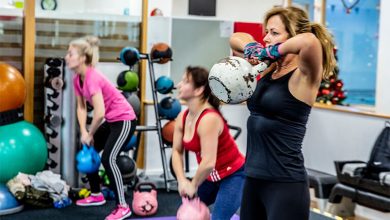Understanding Different Types of Baby Seat
A Parent's Guide

A Note on Babymore

When it comes to quality nursery furniture and baby products, Babymore stands out as a trusted British brand. With years of experience in designing and manufacturing, Babymore offers a diverse range of award-winning cribs, cot beds, mattresses, prams, pushchairs, and car seats. Their commitment to safety and style makes them a go-to choice for parents looking for reliable products that ensure both comfort and functionality for their little ones.
The Importance of Baby Seat
Baby seat serve a crucial role in ensuring the safety of infants and toddlers during travel. From car journeys to feeding times, the right seat can provide security and support while accommodating your child’s growth. Understanding the specific needs of your baby and the features of various seats will guide you in selecting the best option.
Car Seats: Safety on the Go
Rear-Facing Car Seats
Rear-facing car seats are designed for infants and toddlers, providing essential head and neck support during travel. The American Academy of Pediatrics recommends that children remain in a rear-facing seat until they reach the maximum height or weight limit set by the manufacturer.
- Safety: Protects the baby’s head and spine in the event of a collision.
- Comfort: Cushioned seats with removable infant inserts for newborns.
- Longevity: Many models can accommodate growing children, lasting through several stages of development.
Forward-Facing Car Seats
Once your child outgrows the rear-facing seat, a forward-facing car seat becomes necessary. These seats typically come with a harness system to secure your child while still providing protection.
- Adjustable Harness: Ensures a snug fit as your child grows.
- Side Impact Protection: Designed to reduce injury during side collisions.
- Easy Installation: Many models feature LATCH systems for straightforward setup.
Booster Seats
Booster seats raise your child so that the vehicle’s seat belt fits correctly across their body.
- Seat Belt Positioning: Ensures that the lap and shoulder belts fit properly.
- Backless or High-Back Options: Depending on your child’s height and vehicle design.
- Portability: Lightweight and easy to transfer between vehicles.
High Chairs: Feeding Made Easy
Traditional High Chairs
Traditional high chairs are designed for mealtime, allowing infants and toddlers to sit at the table with the family. They often feature adjustable heights, recline positions, and safety harnesses.
- Stability: Wide base for safety during feeding.
- Easy Cleaning: Removable trays and wipeable surfaces.
- Adjustable Features: Grow with your child, offering different heights.
Booster Seats for Dining
Booster seats can also be used for dining, providing a portable option for families on the go. They secure to regular dining chairs and are a great space-saving solution.
- Compact Design: Easy to store and travel with.
- Strap Security: Keeps the seat firmly attached to the chair.
- Comfortable Padding: Offers support during mealtime.
Infant Seats: Versatile and Convenient
Infant Car Seats
Infant car seats are primarily for newborns and smaller babies. They are designed for easy transfer between the car and other locations.
- Convenience: Can be detached from the base and carried, making trips easier.
- Base Installation: Secures the seat safely in your car.
- Protective Canopy: Shields your baby from the sun and elements.
Bouncers and Rockers
Bouncers and rockers are designed for babies to relax and play. They often feature gentle rocking motions and can be portable.
- Soothing Motion: Helps calm fussy babies.
- Play Features: Many come with toys and sounds to entertain.
- Lightweight Design: Easy to move around the house.
Transitioning Between Seats
As your baby grows, transitioning between different types of seats is essential. Here’s a simple guide to help you through the process:
- Start with a Rear-Facing Car Seat: Use until your child reaches the weight or height limit.
- Switch to a Forward-Facing Seat: Once your child is ready, ensure proper installation and safety harness usage.
- Use a Booster Seat: Transition when your child can sit properly in a seat belt.
- Incorporate a High Chair: Introduce mealtime seats as your baby begins eating solid foods.
- Consider Bouncers and Rockers: Use these for play and soothing during early months.
Conclusion
Choosing the right baby seat is a significant decision for any parent. By understanding the various types of baby seats available, you can ensure your child’s safety and comfort while adapting to their growth. From car seats to high chairs and infant seats, each option serves a unique purpose that plays a crucial role in your child’s development. Remember to consider your lifestyle, budget, and safety standards when selecting the best seats for your family. With the right information and products, you can create a secure and comfortable environment for your baby to thrive.








